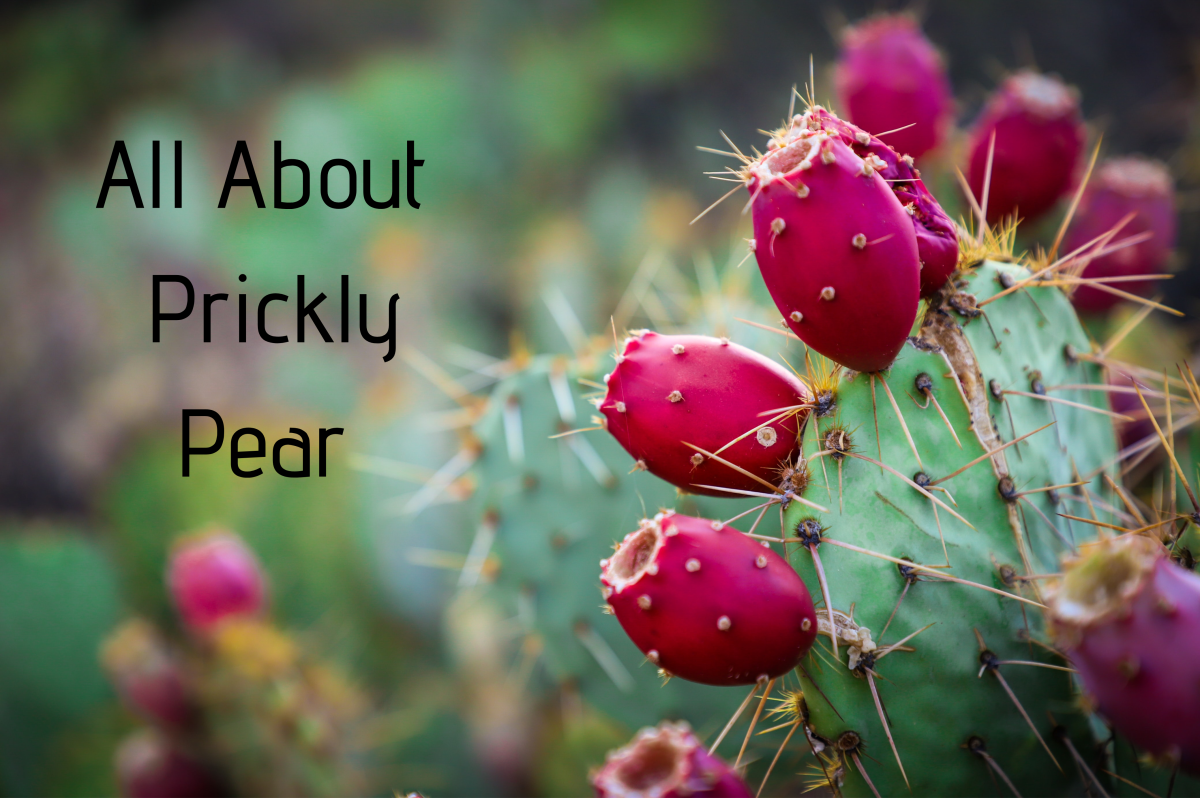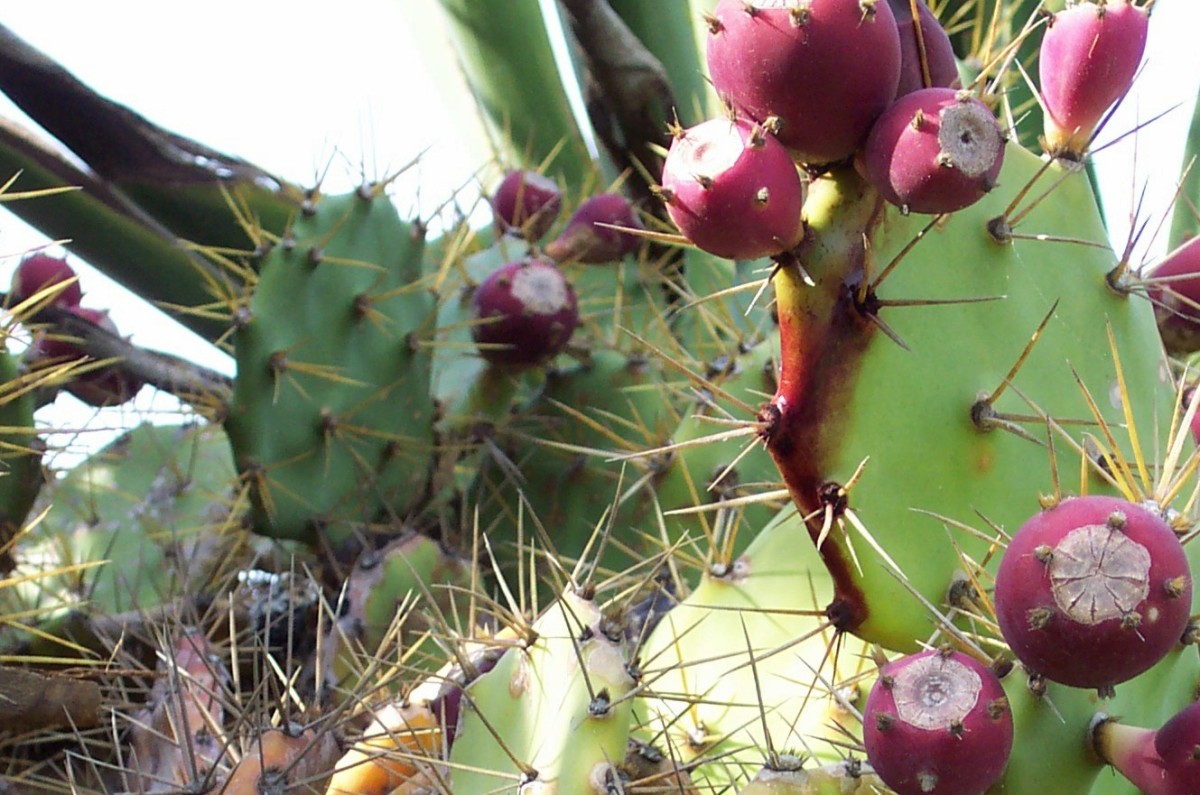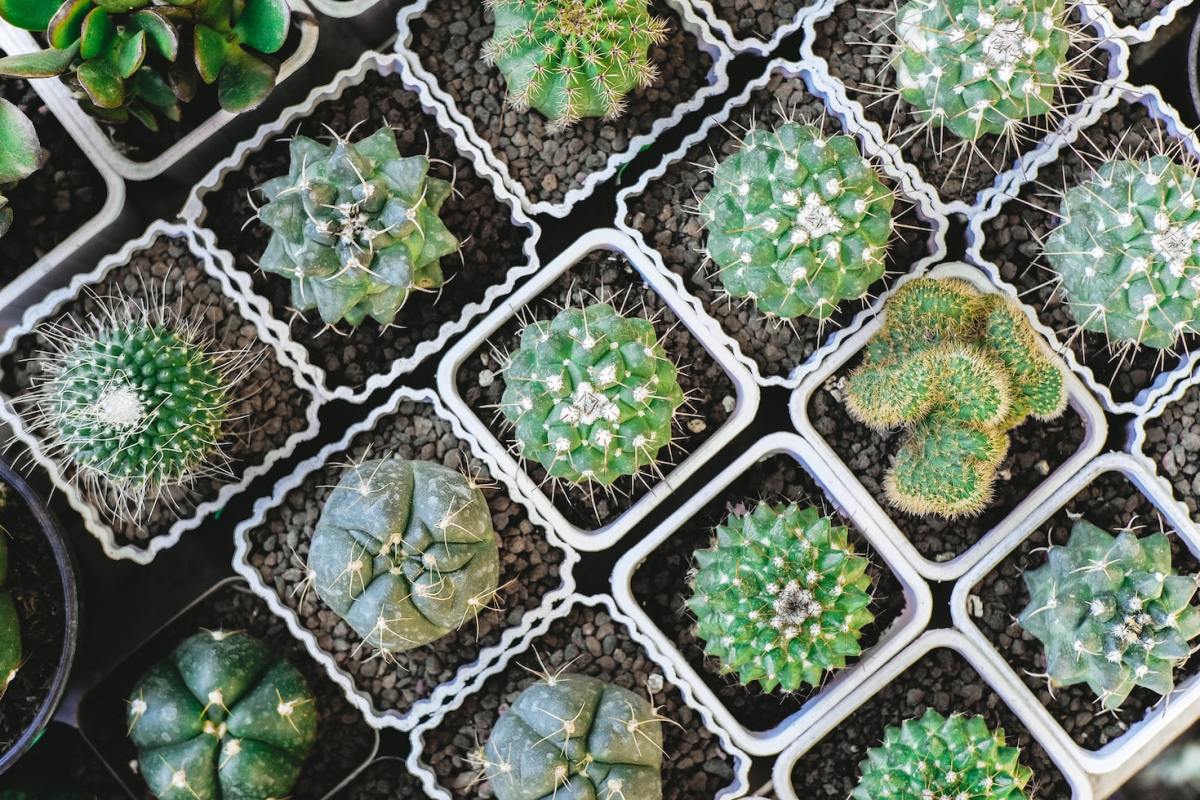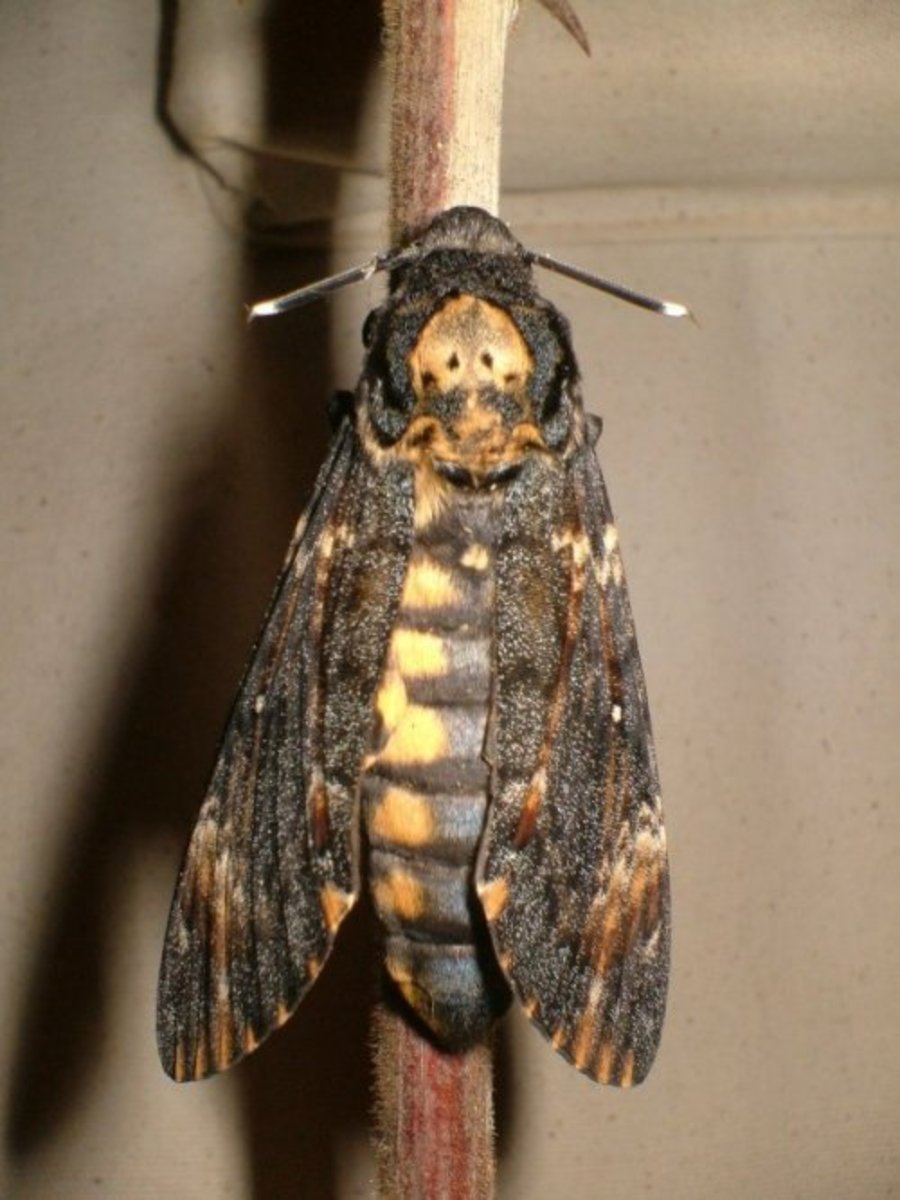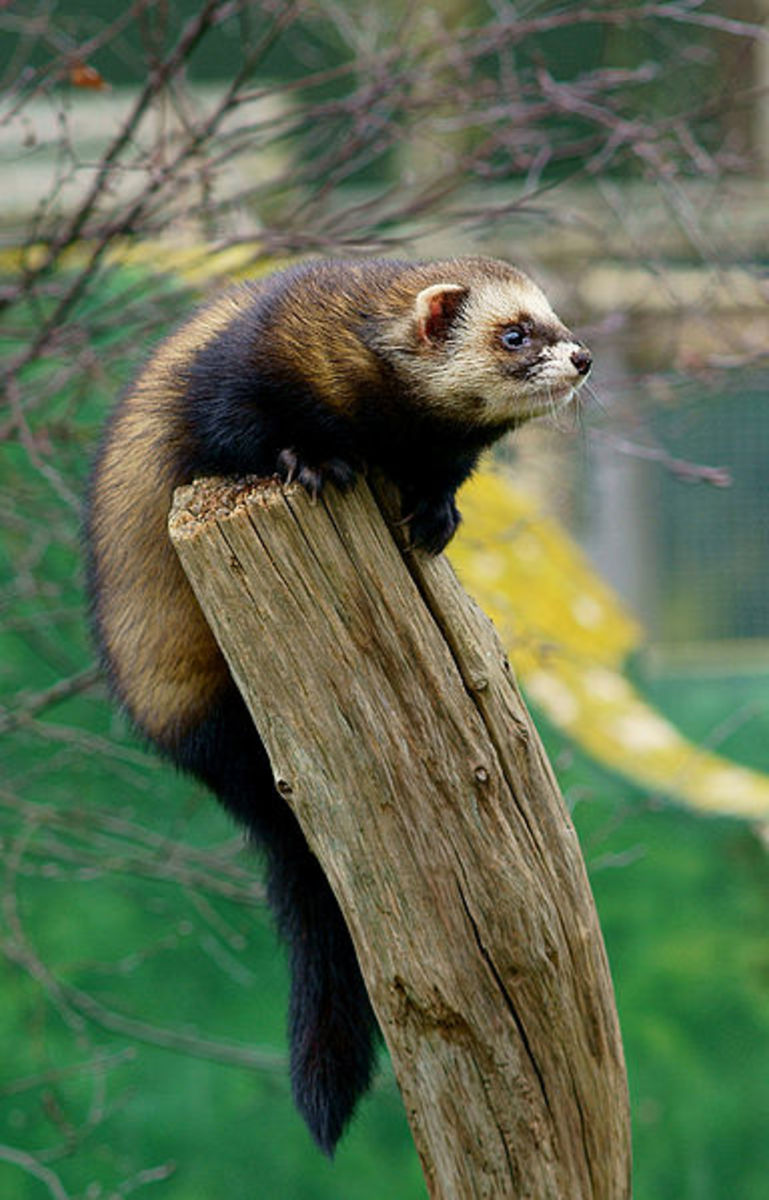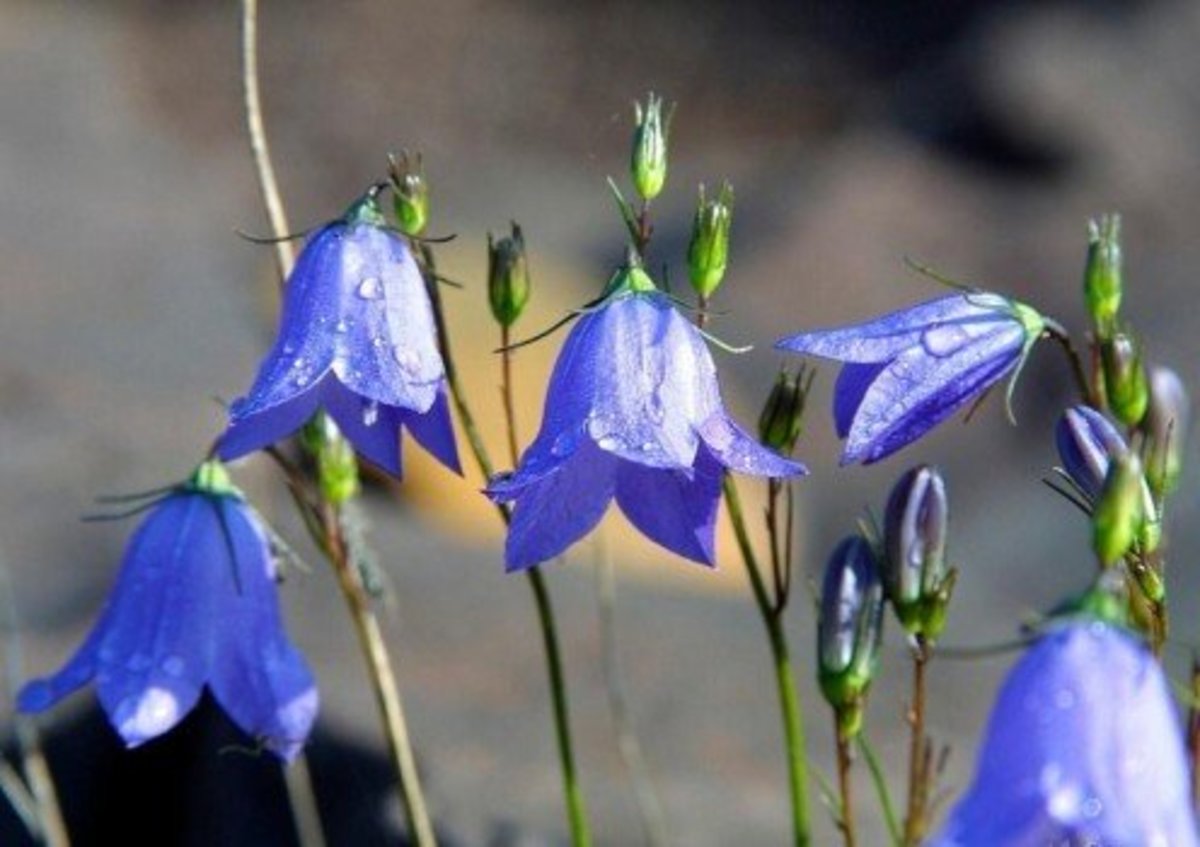When is a cactus not a cactus? When it is a succulent spurge
Canary Island Spurge
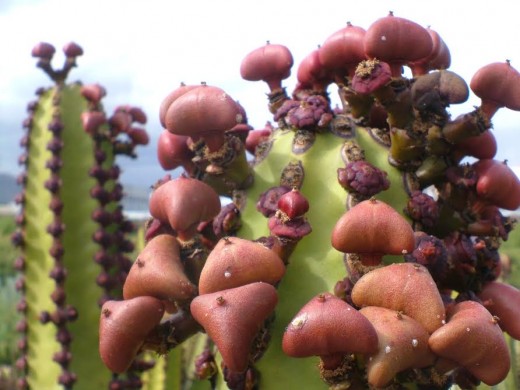
Cacti and succulents in Tenerife
Many people who live in or take holidays on Tenerife think that a very common and prickly plant that can be seen all over the island is a cactus but the Canary Spurge (Euphorbia canariensis) is actually a succulent. Yes, it is adapted to withstand hot and dry conditions, and it does have spines all along its stems but it does not qualify for being included in the true cacti and I’ll explain why.
There is a big difference between the plants that are classed as succulents and those that are cactus species. In cacti the spines all stick out from small circles or bumps known as areoles but in succulents they grow straight out of the stems. In most cacti the spines do not detach easily but in the Prickly Pears (Opuntia species) very small specialised ones known as glochids do.
Prickly Pear
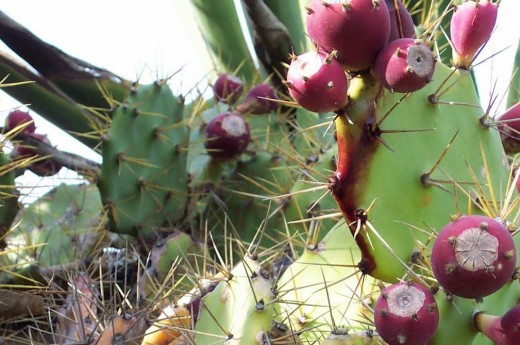
Spines of the Opuntia
They are very difficult to get out if you happen to be unlucky enough to get one or more in you and they are very painful. They make an excellent defence system for a cactus. Some types of Opuntia have spines and glochids.
But getting back to the Canary Spurge, which is also known in Spanish as the Cardón and is found on rocky mountainsides and in semi-desert areas, it is a very good example of the vast difference in forms that species in the Euphorbiaceae can take. It has four or five-sided stems that bear spines along their edges, and as we have already noted, it looks like a cactus.
Canary Candle Shrub
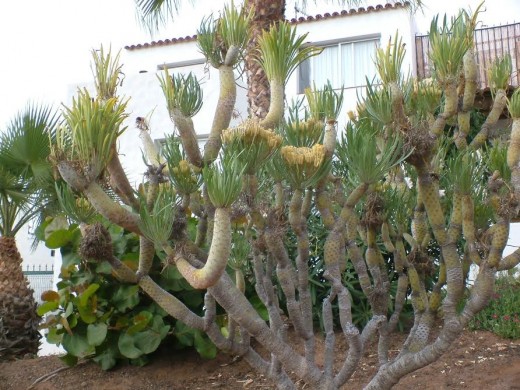
Skin cancer
There are other cacti-form spurges, succulent types, a very rare species found on Tenerife that grows into a tree (E. mellifera) and others that look like ordinary leafy plants. The little Petty Spurge (E. peplus) is one of the spurges with leaves and it is grows as a garden weed in the UK and here in Tenerife. A nuisance as it may be when it crops up where we don’t want it, this species is being seriously studied as a potential remedy for skin cancers.
One thing all the Euphorbias have is a white milky sap that oozes out if the stems or leaves are broken. In most types it is toxic and can cause burns if you get it on your skin. As a matter of interest, the common succulent plant known as the Canary Candle Shrub (Senecio kleinia) is used in traditional folk medicine as remedy for this corrosive latex. The juice from the crushed stems is applied to the burns. Fortunately for us, Mother Nature has put both the plants in the same habitats, and you can often find the Canary Spurge growing on the same dry ground as the Canary Candle Shrub.
Sweet Spurge
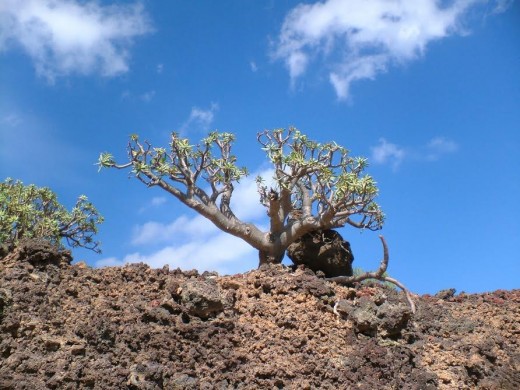
Other spurge species
Besides the Cardón, Tenerife has several other native species of euphorbia. The Sweet Spurge (E.balsamifera) is a succulent shrub that forms clumps with gnarled branching stems and leaves at the tops. It grows in coastal areas and even high on rocky volcanic cones like the Red Mountain in El Médano.
One shrub that covers large areas of scrubland is the Tabaiba (E. broussonetii). It forms large bushes. The Red Spurge (E. atropurpurea) has dark red to purplish flowers and is locally common in the south of the island. As with many species of spurge what look like its petals are actually bracts, which botanists think of as a special form of leaf. These Euphorbias can be very confusing can’t they?
Euphorbia milii
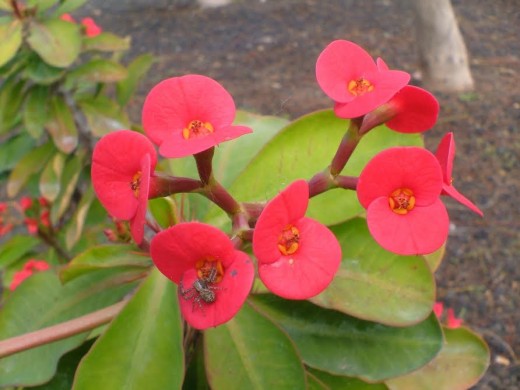
Poinsettia

A Crown of Thorns
One of the commonly cultivated types you will all know well is the Poinsettia (E. pulcherrima) and yes, those bright red ‘petals’ are bracts that I have just told you about. This beautiful shrub grows into very large bushes here on Tenerife, and around Christmas and into the New Year, makes a wonderful display along roads in the north of the island. It is also planted in borders and pots to beautify our public places and add plenty of seasonal colour.
In Latin its name means the “prettiest spurge” and it is very aptly named, I am sure you`ll agree?
Another Euphorbia you will see planted in flower borders all around the island is the Crown of Thorns (E. milii). It has very spiny stems, evergreen leaves and the characteristic red bracts of its genus. It actually comes from Madagascar originally, so the idea that it was what was used to make the crown for Jesus seems very unlikely indeed!
The Candelabra Spurge (E. lactea) forms a small tree of up to 5m in height and fans out into a very distinctive shape. It is a succulent and has spiny edges to its stems which are mottle with a milky-white along the middle section.
This is just a small selection of the many species in the spurge family. They are all very different and very similar too if you know what to look out for.
First published in the Tenerife Weekly, March 2013
Candelabra spurge
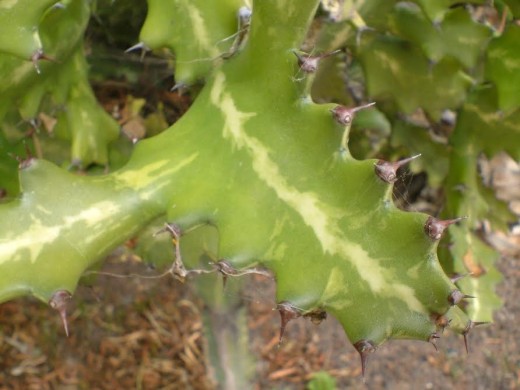
© 2014 Steve Andrews


